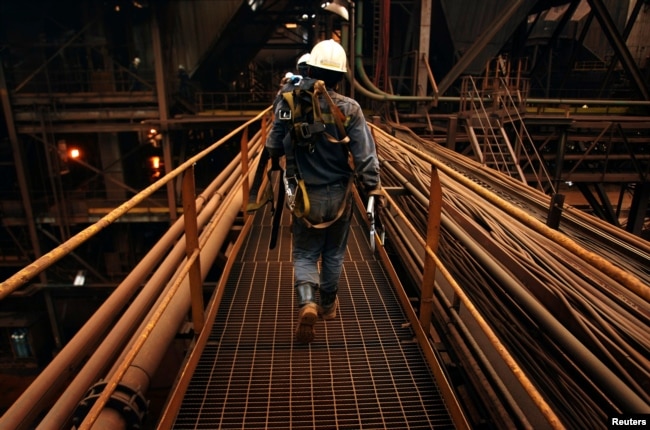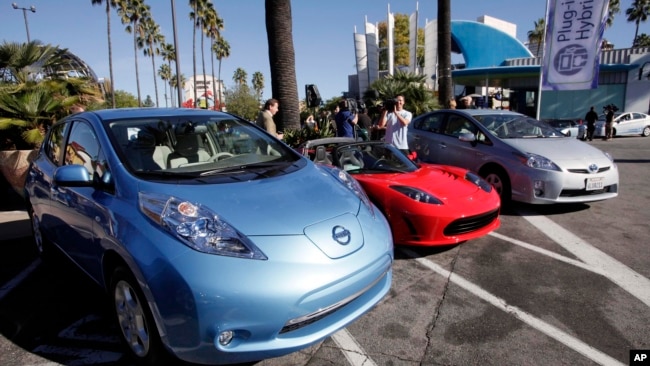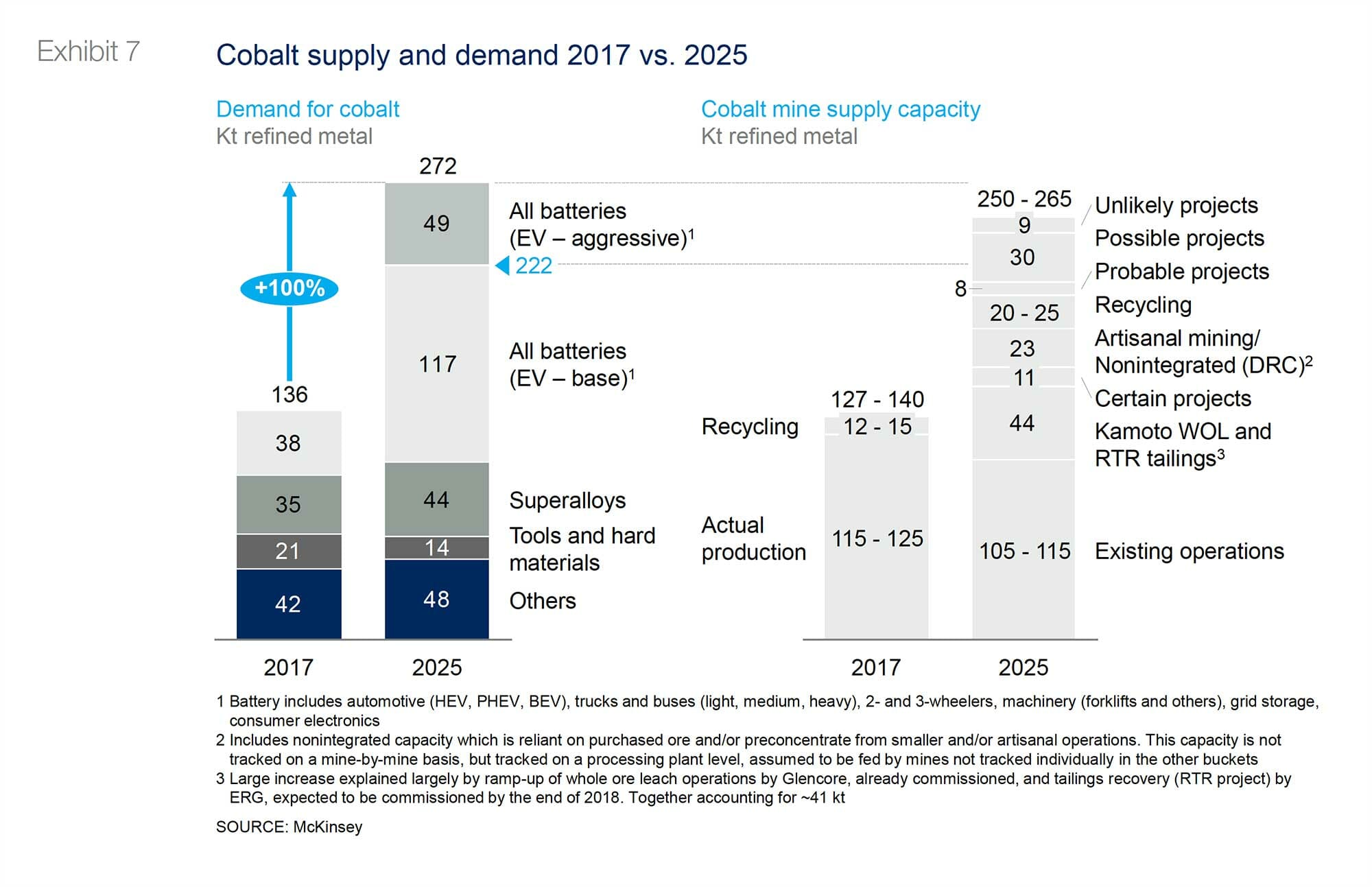World
電気自動車用電池の需要に対応するため、各国は自国の材料を求めている(和訳)
Demand for Electric Car Batteries Drives Nations to Seek Own Materials
April 13, 2022
電気自動車(EV)用電池の世界需要は、今後急増することが予想されます。この需要に対応するため、一部の国では電池の材料となる素材の自国での生産能力を高めようとしています。
リチウムイオン電池は、今後も電気自動車に最も多く使用される技術です。その材料となるのが、軽金属であるリチウムです。その他にも、コバルト、マンガン、ニッケルなどの金属元素が必要です。
これらの材料は、EV用電池の需要増に伴い、価格が上昇しています。今後も大手自動車メーカーによるEV生産の拡大が予想されるため、世界的な需要増が見込まれます。
現在、EV市場で世界をリードしているのは中国です。2021年には、中国で販売される自動車のうち340万台が電気自動車であることが、国際エネルギー機関の報告書で明らかにされています。ヨーロッパは2番目に大きな市場であり、230万台の電気自動車が販売されました。その報告書によれば、世界では、その年に660万台のEVが販売されたということです。
現在、EV用バッテリーに使用される材料の大半は中国企業が生産しており、その中でも鉱物のコバルトは特に重要です。コバルトの最大の供給地として知られているのはコンゴ民主共和国です。中国企業がコバルトの採掘の大半を支配しています。
もう一つ必要な材料であるリチウムは、世界各地に存在します。しかし、コストが高く、採取が難しいのです。リチウムの世界最大の産出国はオーストラリアです。その他の主な供給国は、中国、アルゼンチン、チリなどです。また、リチウムのサプライチェーンは中国がほぼ独占しています。
2020年の世界のリチウム需要は約31万7,500トンです。しかし、業界によると、2030年にはその6倍以上にまで需要が増加する可能性があると予測されています。ロイター通信によると、中国のバッテリーメーカーの旺盛な需要を主因に、炭酸リチウムの価格は2021年に過去最高を記録しました。
ロイターの報道によると、EVバッテリーの生産に使用されるニッケルのほとんどは、インドネシアの採掘事業から供給されると予想されています。近年、中国の大手鉱山会社数社が、インドネシアのニッケルプロジェクトに大規模な投資を行うことを発表しています。
米国などの政府関係者は、EV用バッテリーを生産するために、より多くの材料を自国で採掘・加工することを目指すと述べています。他国からの供給への依存度が低ければ、価格高騰や供給難を回避することができます。
2月には、ジョー・バイデン米大統領が、EV用電池の製造に必要なリチウムやその他のレアメタルの採掘・加工を支援する連邦政府支援プログラムを発表しています。
バイデン氏は、「今日と明日の製品を動かす材料を私たち自身が中国に頼っていては、メイド・イン・アメリカの未来を築くことはできない」と述べています。「そして、これは反中国でもなければ、反その他でもない。親アメリカだ。」とも。
現在、米国で稼働しているリチウム鉱山は、西部のネバダ州にある1つのみです。しかし、現在、ネバダ州、メイン州、ノースカロライナ州、カリフォルニア州で、リチウムの新しい採掘プロジェクトが開発されています。
リチウムを採取する方法として、地下水源から地熱を利用する方法があります。米国では、カリフォルニア州の砂漠地帯にあるソルトン海での操業が、来年から開始される予定です。カリフォルニア州知事のギャビン・ニューサム氏の広報担当者は、この取り組みが”壮大な”量のリチウムを生産することになるかもしれないとAP通信に語っています。
um.
海外でも、地熱を利用したリチウムの採取を計画している企業があります。
イギリスでは、コーニッシュ・リチウムが、今後数年のうちにイギリス南西部で地熱採掘事業を開始する予定です。同社の関係者であるジェレミー・ウラソールは、フランスの通信社AFPに対し、この事業は英国のリチウム需要の”かなりの”割合を提供することを目指すと語っています。
ドイツでは、ヴァルカン・エナジー・リソーシズというドイツとオーストラリアの合弁会社が、昨年、同国の黒い森地域の一帯からリチウムを地熱で採取する計画を発表しています。ドイツ南西部のこの地域には、最大で4億台のEVのバッテリーを供給できるほどのリチウムが存在すると推定する科学者もいます。
Demand for Electric Car Batteries Drives Nations to Seek Own Materials
FILE - From left, electric cars from Nissan, Tesla, and Toyota are presented at a news conference in Los Angeles on Dec. 13, 2013. (AP Photo/Nick Ut, File)
World demand for batteries to power electric vehicles (EVs) is expected to increase sharply in the coming years. To prepare for this demand, some nations are seeking to increase their own ability to produce the materials needed to make the batteries.
Lithium-ion batteries are expected to remain the most widely used technology for EVs in the future. One of the main materials used to produce the batteries is lithium, a light metal substance. Other necessary materials include the metallic elements cobalt, manganese and nickel.
Prices for these materials have been rising as demand increases for EV batteries. The demand is expected to continue worldwide as major automakers keep expanding their EV production.
China is currently the world leader in the EV market. In 2021, 3.4 million of the vehicles sold in China were electric, a report by the International Energy Agency found. Europe was the second largest market, with 2.3 million electric vehicles sold. Worldwide, the report said 6.6 million EVs were sold that year.
Chinese companies currently produce the majority of materials used to make EV batteries, the mineral cobalt among them. The largest known supply of cobalt is in the Democratic Republic of Congo. Chinese companies control most of the cobalt mining operations there.
Another necessary material, lithium, is found in many parts of the world. But it is costly and difficult to collect. Australia is the world’s biggest producer of lithium. Other major suppliers include China, Argentina and Chile. China also largely controls the lithium supply chain.
Worldwide demand for lithium was about 317,500 metric tons in 2020. But industry estimates predict the demand could rise to more than six times that by 2030. Prices for lithium carbonate reached record highs in 2021, mainly because of strong demand from Chinese battery makers, Reuters news agency reports.
The world’s top nickel supplier is Indonesia, which produced about 1 million metric tons of the metal in 2021, the website Investing News reports. Other nations with large nickel mining operations include the Philippines, Russia, Australia, Canada and Brazil.
Most of the nickel used to produce EV batteries is expected to come from mining operations in Indonesia, Reuters reports. In recent years, several large Chinese mining companies have announced major investments in Indonesian nickel projects.
Officials in the United States and other countries have said they will seek to mine and process more materials at home to produce EV batteries. Being less dependent on supply from other countries can help nations avoid high prices and availability issues.
In February, U.S. President Joe Biden announced federal assistance programs to help companies mine and process lithium and other rare metals necessary to make EV batteries.
“We can’t build a future that’s made in America if we ourselves are dependent on China for the materials that power the products of today and tomorrow,” Biden said. “And this is not anti-China, or anti-anything else. It’s pro-America,” he added.
Currently, only one active lithium mine is operating in the U.S., in the western state of Nevada. But new mining projects for lithium are now being developed in Nevada, Maine, North Carolina and California.
One way to collect lithium is through geothermal methods from underground water sources. One such U.S. operation, in the Salton Sea in the California desert, is expected to become operational next year. A spokesperson for California Governor Gavin Newsom told The Associated Press the effort may end up producing “epic” amounts of lithium.
Companies in other countries also plan to use geothermal methods to collect lithium.
In Britain, Cornish Lithium plans to start geothermal mining operations in southwest England in the coming years. A company official, Jeremy Wrathall, told the French news agency AFP the operation aims to provide a “significant” share of Britain’s lithium needs.
In Germany, a German-Australian partnership called Vulcan Energy Resources announced plans last year to geothermally collect lithium from an area in the country’s Black Forest area. Some scientists have estimated the area in southwest Germany could hold enough lithium to supply batteries for up to 400 million EVs.
Words in This Story
battery – n. a device that provides and stores electricity for certain electronic devices
supply chain – n. the system of people and things that gets a product from its place of manufacture to the person who buys it
geothermal – adj. of or connected with the heat inside the Earth
epic – adj. extremely large
significant – adj. important or noticeable
コバルトを減らす試み
電気自動車の電池にも使われる「コバルト」は石油より早く枯渇する? - EVsmartブログ
上記サイトより下記抜粋
コバルトという元素は、電気自動車(EV)やスマートフォンなどのバッテリーに含まれているだけでなく、ジェットエンジンやドリルビットなどの耐熱合金、スピーカーの磁石、意外なところでは石油の精製などにも使われている有能な金属です。
2025年にはEVの販売台数が10倍に伸びると考えられており、車載バッテリーの他に特殊合金やその他の用途も含めて年間に25万トンの需要が予想されています。EVの需要が仮にそこから横ばいになったとしても、30年以内に現在判明している埋蔵量をすべて使い尽くしてしまう計算になります。
出典:McKinsey – Lithium and cobalt, a tale of two commodities
こうした背景からバッテリー開発者は、いかにコバルトの量を減らすか、日夜研究に励んでおり、例えばニッケルとマンガン、コバルトを使ったNMCバッテリーは改良を重ねることでNMC111(ニッケル、マンガン、コバルトが1:1:1の割合)からNMC532、NMC811へとコバルトの量を順当に減らしており、現在はNMC9.5.5(コバルト比率が0.5)も開発が進められています。
テスラが使うNCA(ニッケル、コバルト、アルミニウム)はコバルトの含有量が3%まで削り込まれていますが、中国で生産されるモデル3にはコバルトを一切含まないリン酸鉄リチウムバッテリー(LFP)を採用したグレードも存在します。LFPは性能でNCA等に劣る部分もあるのですが、材料が安く安定供給が可能で、寿命が長い特長があります。
そして2020年9月から販売予定されている「テスラ・バッテリー・デー」ではコバルトを含まない新型バッテリーが発表され、パナソニックと共に2~3年後から量産体制に入ると予想されています。
現在出回っている電気自動車のバッテリーも、10~20年後に役目を終えた後にリサイクルする必要がありますが、これは住友金属や、テスラの元最高技術責任者JB・ストローベルが設立したレッドウッド・マテリアルズ等がコバルトの回収技術をすでに確立しており、他の資源とともに再利用されるでしょう。
と、このサイトでは、述べられていました。





